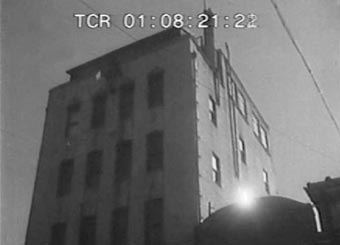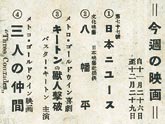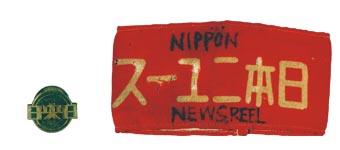Wartime Film Production
During the war, films, a form of entertainment, were subject to controls and the cinema became a means for popularizing the war effort. According to the Film Law established in 1939, movie theaters were obligated to play newsreels of the war and related news as well as cultural films showing nature and the everyday lives of the Japanese. As the war progressed, conditions became harsher and film grew scarce, resulting in an even stricter national system of control. Movie studios began merging, leading in 1941 to the establishment of the Japan Film Corporation, the company that would later produce this A-bomb documentary film.
 [2] |
[2]
|
|
 [3] |
[3]
|
 [4][5] Japan Film Corporation armband and company emblem |
